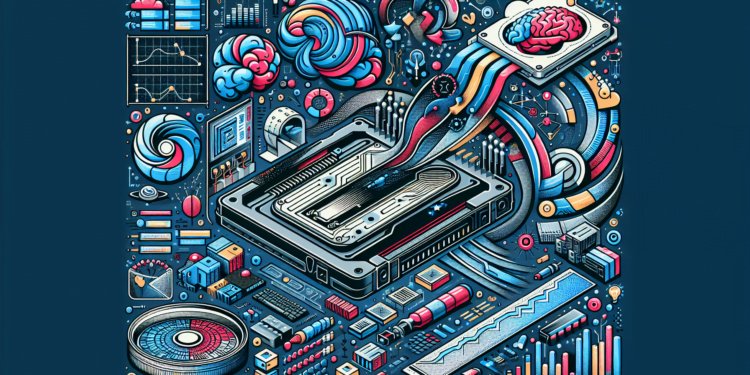– Goal: Please translate the following text from Spanish to English with the utmost accuracy, paying special attention to maintaining the original meaning and using idiomatic expressions and correct grammatical structures in English. The goal is for the translation to sound natural and fluid to a native English speaker, avoiding any sense of strangeness or error due to translation.
- Context: Artificial Intelligence
- Markdown: respect the original markdown in the translation
- Text to translate:
The development of SSDs (Solid State Drives) in cognitive robotics and artificial intelligence (AI) systems comes from an ongoing synergy between computing hardware and machine learning algorithms. Initially, AI focused on deterministic algorithms, but the explosion of deep learning and convolutional neural networks (CNNs) revolutionized our ability to analyze and process large amounts of data with almost anthropomorphic efficiency.
Techno-algorithmic Advances
Within the AI universe, SSDs have played a crucial role in the speed of access and processing of vast volumes of data, key for training deep learning models. The transition from mechanical hard drives (HDD) to SSDs enabled a significant advancement in terms of speed and reliability, which are extremely relevant for the learning and execution of predictive algorithms.
A Kaleidoscope of Practical Applications
In the realm of practical applications, the use of SSDs in AI has enabled remarkable developments in fields such as personalized medicine, where the speed in reading large sets of genomic data has made the customization of treatments possible. Noteworthy here are the CNNs that, supported by the writing and reading speed of SSDs, have permitted the processing of medical images with a level of diagnostic precision previously thought unattainable.
Challenges and Comparisons: SSD vs Traditional Storage
A meticulous comparison of performance between SSDs and HDDs shows that SSDs offer significantly lower latency and higher transfer rates. These advantages are vital when handling algorithms that involve intensive input/output (I/O) operations, such as those used in time-series analysis or natural language processing (NLP).
Innovations: NVMe and the Scalability of AI
The advent of SSDs with NVMe (Non-Volatile Memory Express) interfaces over PCIe (Peripheral Component Interconnect Express) protocols exponentially increases bandwidth and reduces latency, marking the cutting edge in storage for AI systems. The parallelization and scalability provided by these devices are crucial in the current architecture of servers dedicated to machine learning and big data analysis.
The Future of SSDs in AI: Perspectives and Projections
Looking to the future, the holistic interaction between SSDs and AI is directed towards emerging technologies like quantum computing and optical memory. The promise of achieving near-infinite memory and processing speeds that defy the limits of current physics positions the industry on the threshold of a new era of exponential advancements.
Conclusions
The trajectory of SSDs in the field of AI demonstrates a trend towards the refinement of data infrastructure and a constant optimization of storage systems. Global attention is focused on how these advances translate into tangible improvements in quality of life through continuous technological innovation and the intelligent application of computational cognitive theory and emerging algorithmic models.






















